You can view this information in two different ways. Our alphabetical list provides information on the status of each species within the harbour, finder dates and names, photos and favoured locations. By clicking on the Systematic List button you will be presented the full Poole Harbour systematic list which includes status of species, pending records and historical accounts.
To date, 333 species have occurred and have been accepted within the Birds of Poole Harbour boundaries. A further 11 distinct subspecies have also been seen. In addition, we have two species/subspecies which have been recorded, but are awaiting acceptance by the appropriate records panel.
There are a handful of historical records, for which there is currently insufficient information to allow their inclusion onto the Poole Harbour list, but are believed to be genuine records. They are listed at the end of the list.
Finally, there are a number of feral or escaped species that have been recorded within the Birds of Poole Harbour boundaries. They are included for completeness, but are not included on the Poole Harbour list.
We would be interested in hearing details of any species that do not appeared on this list.
The Birds of Poole Harbour systematic list is a PDF which you can view by clicking on the button below. It was last updated on December 2019.
Full Poole Harbour Systematic List
Calidris melanotos
Vagrant
Pectoral Sandpiper is the most regular of the rare American waders that occur in Dorset. With most records occurring in September there is now ample amount of habitat for more to be found with Brownsea Lagoon, Lytchett Fields, Holton Pools and Sunnyside Pools looking like the best sites. To date there have been 10 Poole Harbour records.
1 on 22nd Sep 1935 at Swineham Point (BB:29;217)
1 on 24th Sep1967 at Wareham Sewage Works
1 on 11th Sep1992 at Lytchett Bay (E.Brodie et al)
2 on 20th Sep 1992, 1 remaining until 22nd at Swineham Pools, Swineham (S Morrison)
1 on 14th Sep 2003 at Middlebere (T.Elborn et al)
1 on 17th – 20th Jul 2008 at Swineham GP (K.Lane et al)
1 on 11th Sep 2011 on Arne Moors (P.Morton et al)
1 on 16th Sep 2012 on Brownsea Lagoon (A.Mears)
1 on 3rd-6th Oct 2014 at Lytchett Bay (R.Webb et al)
1 on 10th Sept 2020 on Arne Moors/Swineham ‘Stilt Pools’ (P.Moore) which was later joined by a second on Sept 14th (D.Foster)
1 on 12th – 20th October 2021 at Lytchett Fields (Ian Ballam et al)
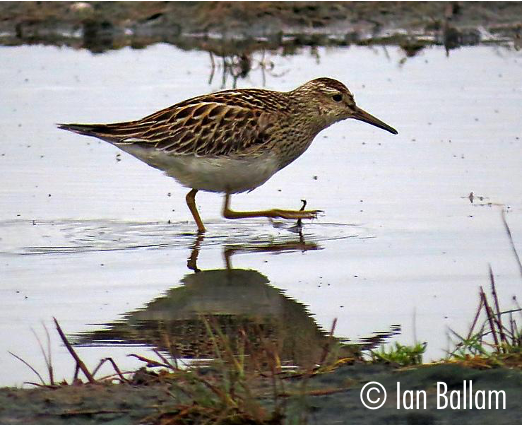
Remiz pendulinus
Vagrant
There have been 11 Dorset records to the end of 2015 involving 14 individuals. Extreme vagrant to the harbour and all records so far have been in winter.
1 on 10th Jan 1989 at Swineham, seen briefly before it flew off. (P. Williams). 2nd Dorset record.
1 from 20th Jan – 13th Feb 1998 on the Turlin Moor shore at Lytchett Bay (N.Douglas, C.Whitborne et al) photo.
2 on 22nd Nov 2015 flew north east over Lytchett Bay View calling (S.Robson). 4 hours later they were found at Longham Lakes!
Falco peregrinus
Resident
Peregrines can be encountered (infrequently) anywhere in the harbour, certainly during winter and even over adjacent urban areas. They are most easily seen in the winter months when there could be half a dozen or more at times as they take advantage of an abundant food source that includes waders, wildfowl and even smaller gulls. They are less obvious during summer but may still visit the harbour on occasions to catch prey which is then taken to feed young in nests on nearby coastal cliffs or in Wareham Forest. Some youngsters from these nests may relocate to the harbour once fledged where they can be heard soliciting loudly for food and even receiving prey items from a parent during early autumn.
The best locations to see Peregrines generally occur where there are the highest densities of prey species such as Brownsea Island, Middlebere, Wareham Channel, Holes Bay, Brands Bay, Lytchett Bay and around the Arne peninsula. They breed on the cliffs at Ballard and in 2020 bred on Corfe Castle which was the first time in 20 years they had bred at this site.
As of spring 2019 a pair have set up residence on the tall section of the Asda building at Holes Bay, but sadly didn’t breed in 2019 or 2020. However in 2021 and 2022 they nested on the Barclays Building which is the first Poole Town nesting since they nested on the old Poole Power station in 1986.
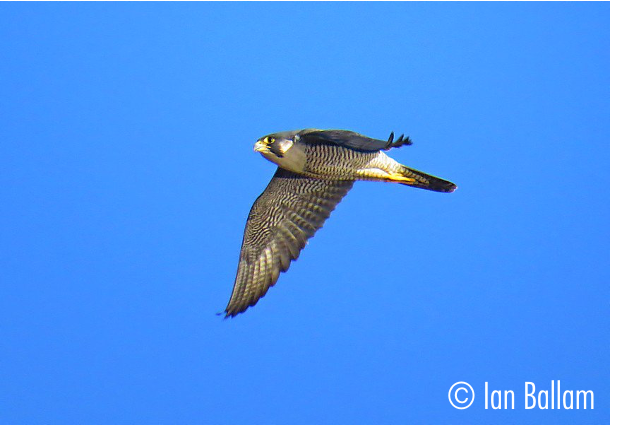
Phasianus colchicus
Resident
A bird of utmost controversy. Breeds in most rural habitats around the harbour and is still released annually as game for shooting. Each autumn up to 50 million pheasant are released into the UK with no true knowledge of the scale of impact it has on our native wildlife. As pretty as Common Pheasant are its surely time to start learning about the the true scale of disruption these birds have on our native wildlife. Pheasant rearing started in the harbour on Brownsea around 1750 and was quite intensive between about 1870 and 1914 with over 2000 being raised for the then owner Charles van Raaltes shooting parties. “Rearing stopped in 1925 and since that date the Pheasants have survived as completely wild birds on Brownsea” stated Tony Wise.
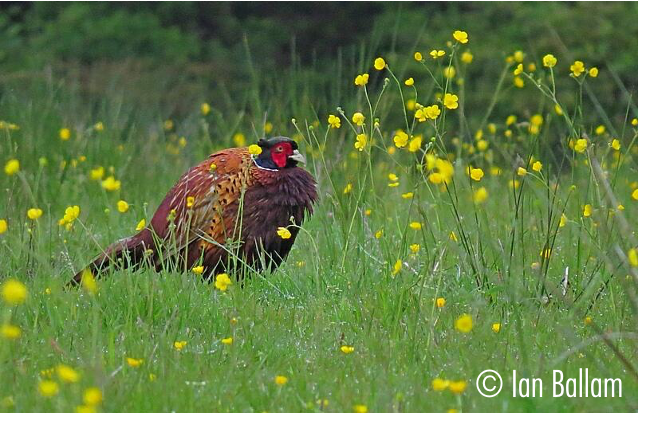
Ficedula hypoleuca
Passage Migrant
Can realistically turn up anywhere with suitable habitat, but Studland and Ballard have had noteworthy counts in Spring. Autumn passage is stronger from early August to mid September with Arne, Ridge, Middlebere, Fleets Corner, Studland, Ballard, Swineham, Corfe and even 3 in a small Parkstone garden in August 2004.
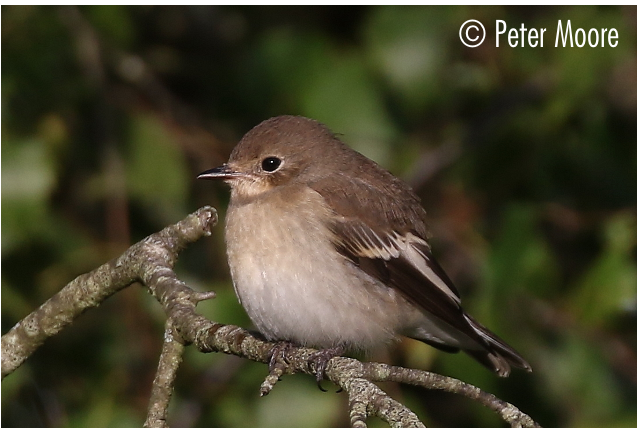
Motacilla alba
Resident
Breeds throughout the whole harbour but more obvious in autumn and winter when large flocks congregate to roost in Poole Town Centre, Poole Park and other urban sites around the harbour. Also roosts in the reed beds around the harbour such as Lytchett Bay and Swineham. In October 2012 up to 500 were coming into roost at Lytchett Bay. Also often running down Poole High Street ahead of busy walkers feet as they look for crumbs in the street cracks. Also recorded in Poole Harbour each year is the continental sub-species White Wagtail.
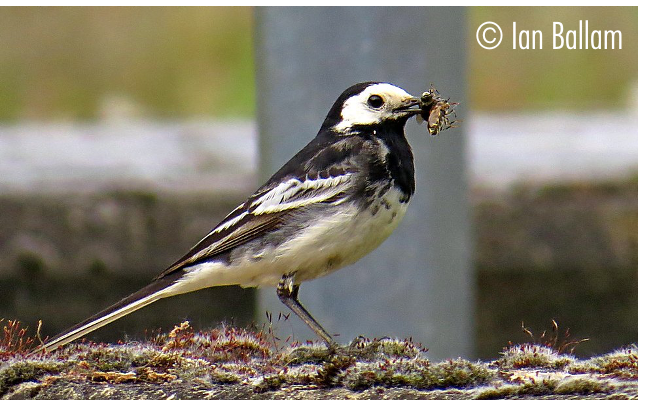
Podilymbus podiceps
Vagrant
An exceptional Poole Harbour record of 1 from the 10th February – 24th May 1980 on Little Sea, Studland from the triangle hide. Ian Prophet, down from Bristol on the 10th Feb 1980 for a day called in to the triangular hide at Studland around 15.00 in the afternoon and was shocked to see a Pied -billed Grebe coming out of the reeds. Calling Mick Rogers, the observatory warden at Portland, to spread the news it materialised that it was the same bird that had been at Radipole in Januray of the same year. It was in winter plumage when it arrived but attained full breeding plumage during its stay. It was frequently seen displaying and heard calling. At the time it was a 1st for Dorset and only the 7th for Britain and Ireland.
Anser brachyrhynchus
Rare Winter Visitor
Whilst this species might be abundant in Norfolk (70,000+), it is very rare in Dorset (12 records in the whole county between 1950 and 1979!). Despite having been seen in several locations it seems the Frome Valley and Holmebridge have been favourite sites in recent years.
5 on 17th Dec 1961 at Brands Bay
24 on 29th Dec 1981 over Lytchett Bay (P. Harvey). These birds had previously been seen on the Stour at Merley.
75 from 17th Jan 1982 to early Mar at Arne/Wareham Water Meadows was unprecedented cold weather influx unlike anything noted before or since.
1 on 7th Nov 1993 at Hatch Pond
2 from the 31st Jan – 2nd Feb 2000 at Middlebere (G.J.Armstrong)
3 on 23rd Dec 2003 at Middlebere (C.Cottrell)
1 on 24th Dec 2007 at Keysworth (G.J.Armstrong) with 17 White-fronted Geese.
1 from 14th – 19th Jan 2008 at Swineham (G.J.Armstrong, J.A.Lidster et al), presumed same as above.
1 from 21st Dec 2012 – 30th Jan 2013 at East Holme (S.W.Smith et al)
1 on 6th Oct 2016 over Hatch Pond was adjudicated by DRP as being either this species or Tundra Bean Goose.
1 on 9th-10th October 2017 at East Holme (N.Hopper)
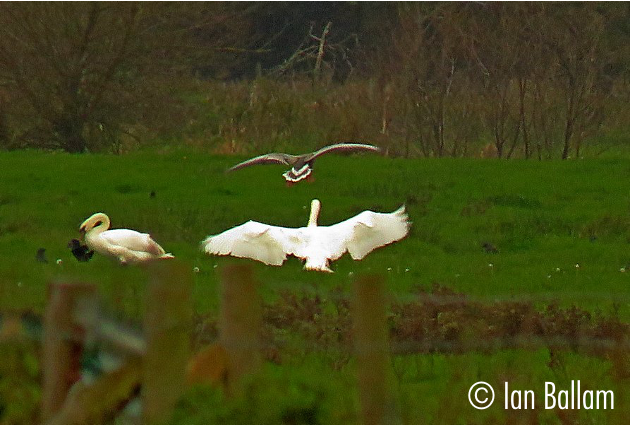
Anas acuta
Winter Visitor
Nationally important numbers of Pintail visit Poole Harbour in winter and half the counties birds winter here too. They used to commute high in the sky from Little Sea where they spent much of the time, to feed in Newtons and Brands Bay and seemed to have developed a strategy that has avoided shooters. But sadly almost none use Little Sea each winter now, just like all other duck species, they abandoned this once popular winter-duck hotspot.
This population seems to have been fairly constant for the past fifty years and Pintail have bred in the harbour once, in 1983 where they raised 3 young. This is the only confirmed breeding record for Dorset. There are several instances of summering, notably during the 1980s. The earliest record is for 24th August 1972 and the latest 26th April 1995 with a maximum harbour count of 525 on 17th January 1971 which is the best month to see them.
Today, Arne Bay and Holes Bay NW (the Stone Bench) offer the best viewing opportunities of this stunning, sleek winter visitor. The average 5-year winter total population is 263 per winter.
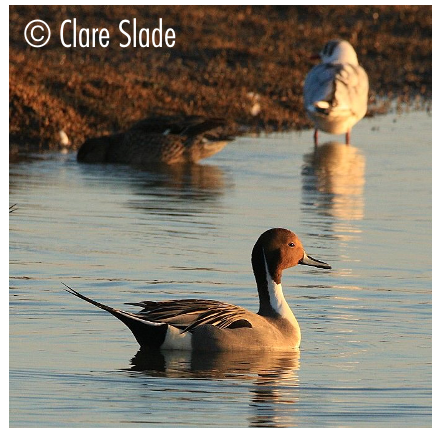
Aythya ferina
Winter Visitor (now in very small numbers)
A sad story of a once abundant winter duck. The recent national decline has seen a 60% drop in over-wintering populations, but sadly here in the harbour it’s considerably more. The majority of the wintering population were at Little Sea with smaller numbers also at Brownsea and Poole Park. Numbers increased over a sixty year period averaging around 600 each winter with 523 in January 2002 and a huge maximum of 2801 on the 17th February 1963.
The threshold for Pochard is 440 birds which made Poole Harbour a site of national importance as a wintering area for this species.
However, mirroring the UK decline, Poole Harbour is now largely a Pochard ‘no-go’ zone with the current 5-year wintering average maxing at just 10 birds per winter. And even that number is dropping with just 4 over-wintering at Swineham GP during the 2019/20 winter period.
Breeding occurred annually in Poole Harbour for several years from 1876 and 30 young were hatched near Wareham in June 1877”-Mansel-Pleydell (1888). While there have been no recent breeding records, Pochard does breed elsewhere in the county and could breed in the harbour where habitat is suitable.
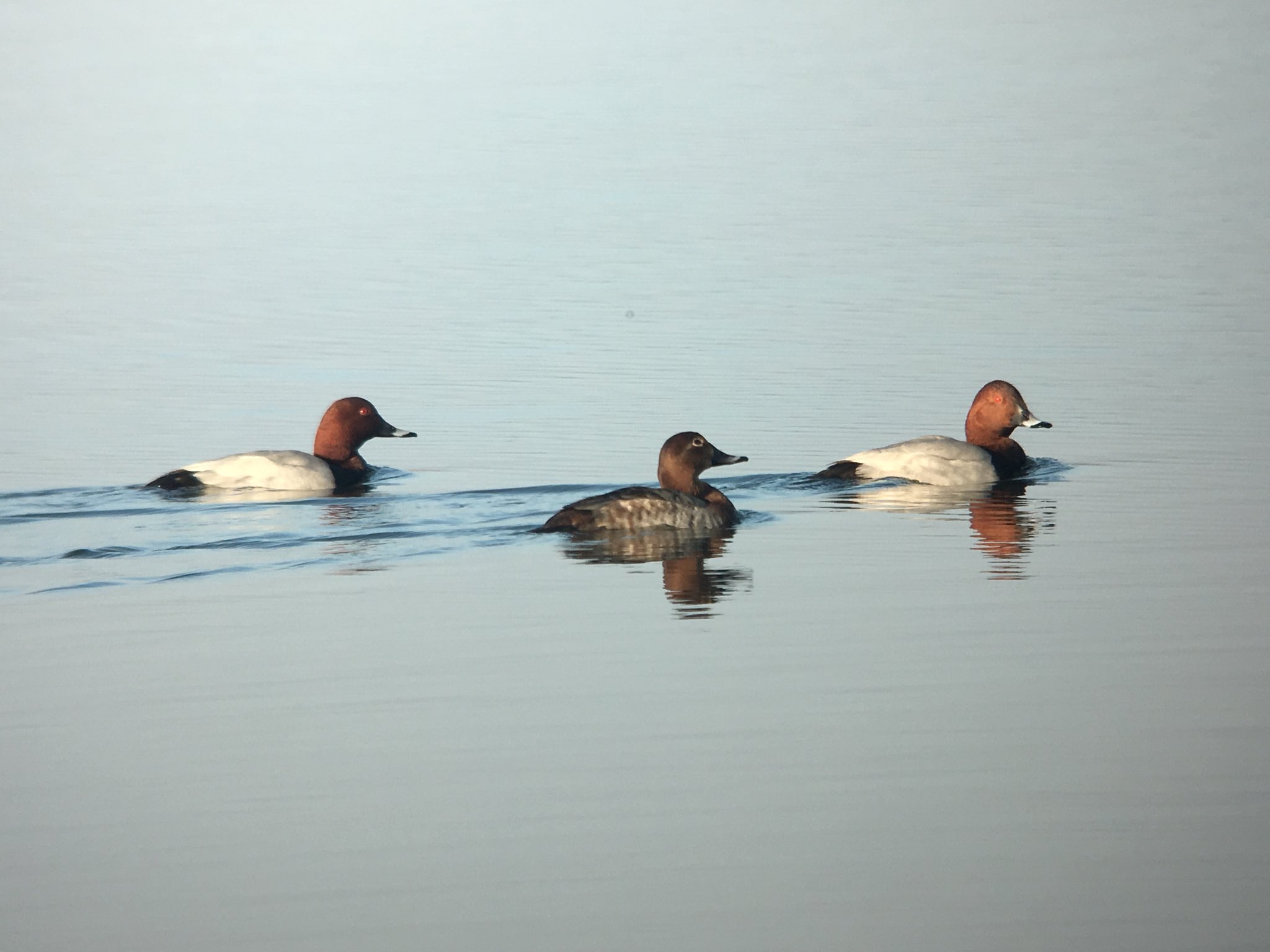
Stercorarius pomarinus
Scarce Passage Migrant & Winter Visitor
A sea watch from Branksome or any of the Studland beaches during May or Oct/Nov with a strong on-shore wind offers the best chance.
H G Alexander who retired to Swanage in part for the seawatching was the first to find an adult Pomarine Skua in Studland Bay on 17th October 1961. He also found the next one in Shell Bay chasing terns on 28th May 1963. One of the most enviable sightings was made by Len Howells , when he flushed it from the beach in Shell Bay on 2nd May 1970 and enjoyed sparkling views. No doubt in just reward for all the bird counts he had done and the hides he had made at studland. Other historic records include 27th September 1982 off Canford cliffs and 2nd October 1983 at Arne.
Another flew out of Poole Harbour entrance on 11th September 1986 and was seen again in Studland Bay on 14th September, and two flew south in Studland Bay on 18th October 1987, following the Great Storm.
That said the best record occurred on a dry sunny evening when 6 adults were found sat on the sea on 26th May 2002 off Branksome Chine (I.M.Stanley, J.A.Lidster, N.Hopper). 5 took off and flew inland along the Corfe Ridge, reaching great height before being lost to view.
Recent Records
2014
Branksome Chine – 2 on the 16th October
2016
Branksome Chine 2 on 6th Oct, 1 on 6th Nov, 4 on 8th Nov.
2017
Ballard Down 2 on 30th Apr.
Branksome Chine 1 on 30th Apr, 1 on 15th May.
Poole 1 W from Shore Road beach huts, Sandbanks, on 15th May.
2021
1 from Alum Chine 24th April
Fratercula arctica
Vagrant
Vagrant to the harbour and only 3-4 pairs breeding in Dorset at Dancing Ledge. Probably the most sought after ‘common’ bird in Poole Harbour with only about five records since records began. Most records involve birds shot in Poole Bay during 1800’s or birds found dead on Studland beach during the 1960’s. It was also stated that Puffin were once common place on the cliffs of Studland and Old Harry where around 300 could be knocked off the cliffs with a stick in a single morning!
There is only one record in recent times.
1 on 12th Feb 2014 at Branksome Chine (G.J.Armstrong). This bird occurred following very stormy weather in the western approaches which also produced c35 birds around the same time along the Dorset coast. Many of these were already dead or exhausted.
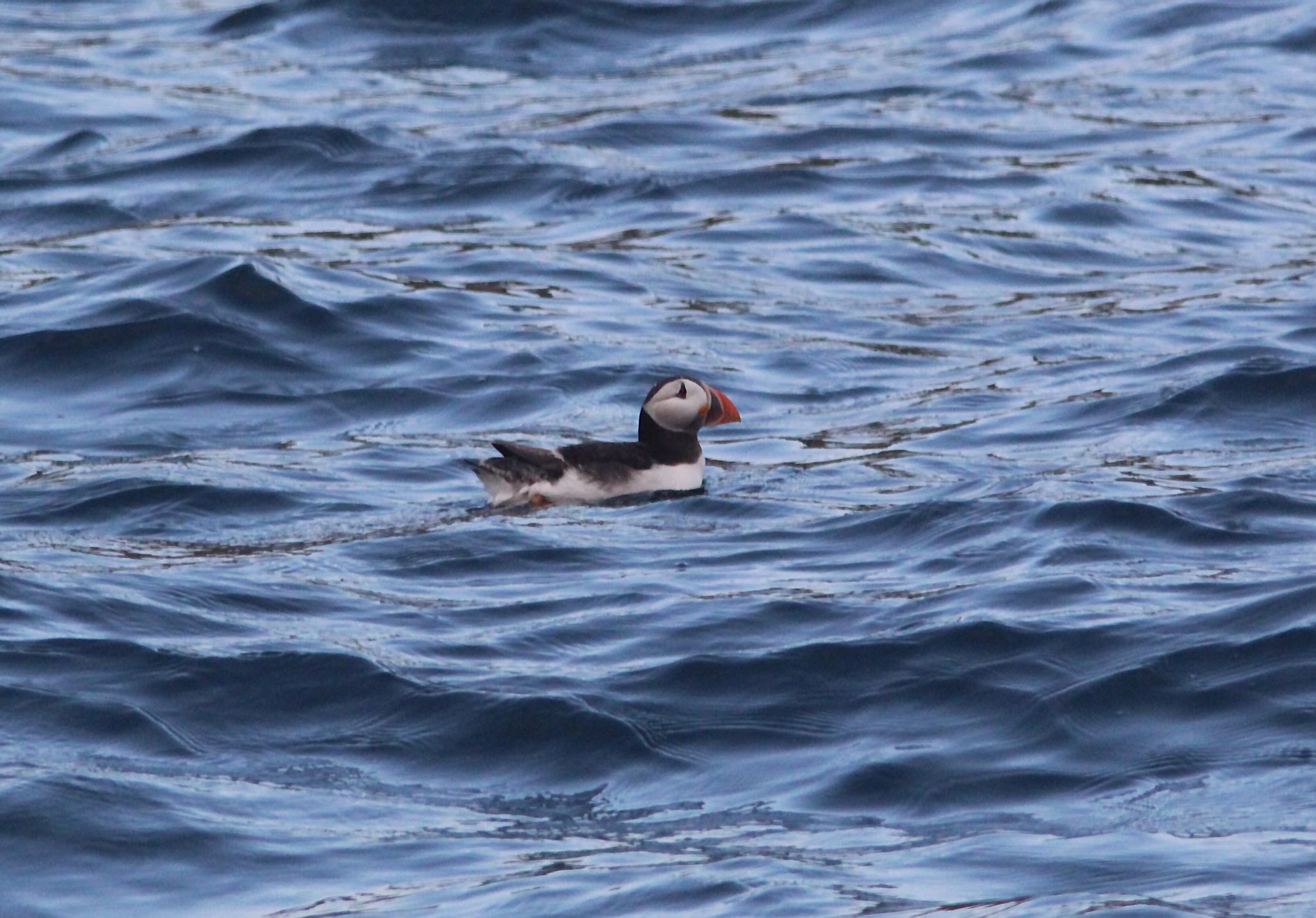
Ardea purpurea
Vagrant
A rare bird with only 6 records in the harbour, the most bizarre being one at Hatch Pond in 1999 for three days. It can’t be that often that a rare southern European heron turns up on an industrial estate pond in the centre of town. The long-staying bird at Little Sea in 2018 was another well watched bird too. There’s a historical record from Van Rallte of one found along the sea wall on Brownsea in 1890.
A second summer from 8th – 15th April 1992 at Lytchett Bay (Graham Armstrong et al)
An adult on July 24th 1994 at Lytchett Bay 0 (E.Brodie)
A juvenile from the 27th August – 29th September 1999 at Hatch Pond (George Dunquin et al)
Little Sea, Studland An imm between 16th-23rd Jul 2018 and between 1st Aug and 1st Sep (SW Smith et al). This bird was almost exclusively seen in the evening coming into the egret/heron roost, but was reliable enough for most people who wished to see it to at least catch a glimpse. The first in the county since 2015.
1 in flight over Bog Lane, Stoborough on 20th Apr 2020 (Durwyn Liley).
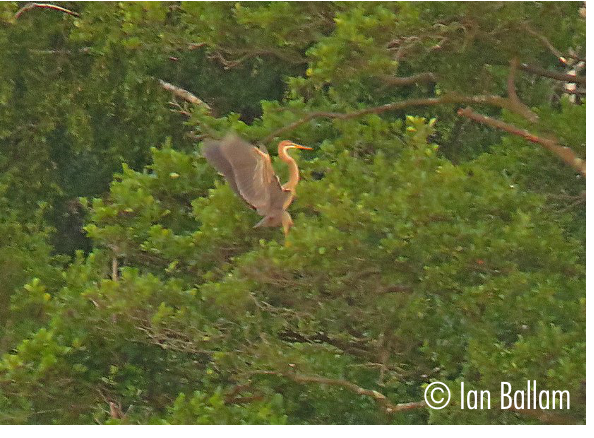
Calidris maritima
Winter Visitor
The maximum count is 11 in Feb 2008, Nov 2009, Jan 2010 and Jan 2011. Other interesting records include: 7 at Poole Quay on 8th Jan 1983; 8 at Arne on 8th Nov 1984; 3 at Hamworthy beach on 17th Mar 1996; After high winds, one walking along the road towards Swan Lake in Poole Park on 18th Jan 1987; 1 on Brownsea on 31st Oct 2012;
Birds are sometimes seen passing Branksome chine as they, interchange with nearby birds along the coast at Hengistbury Head.
Earliest record is 1 at Arne on 23rd Aug 1966 and the latest is 1e at Branksome Chine on 28th Apr 2003. One was even found on a pavement in Poole Park one winter during a a particularly bad rain storm.
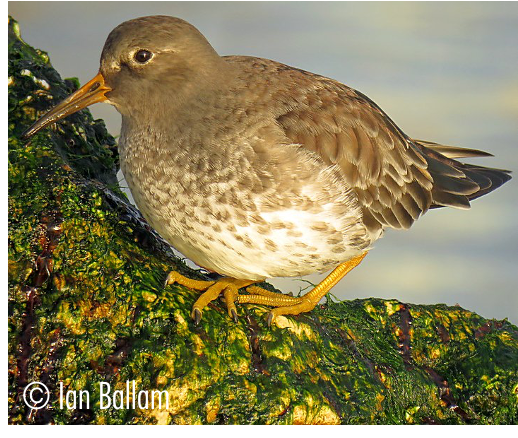
Coturnix coturnix
Rare Visitor
Rare visitor to the harbour. This species is prone to large variations in its annual occurrence in Britain. Whilst annual in Dorset there has not been a Poole Harbour record for more than 20 years. However a very vocal bird at Hartland between June 1st and July 1st 2021 was most welcome.
Reportedly the species used to breed many years ago.
1 in spring 1970 at Hartland Moor for 9 days.
1 on 25th July 1987 at Keysworth
1 on 15th Aug 1988 at Studland
4 calling males in 1989 at 4 sites in the “Poole Basin”. It is impossible to know now if these were actually in the Poole Harbour recording area. 1989 was the best ever year for this species in the County.
1 on 28th Sep 1992 at Goathorn
1 on Arne Moors singing 24th May 2016
1 on 15th Jun 1993 at Hartland Moor1 on July 6th 2019 sound recorded flying over the Piddle Valley at night (P.Morton)
1 on Godlingston Heath 7th June 2020
1 from June 26th – July 1st 2021 at Hartland Moor acid grassland site (G.Hayman and M.Wood)
1 at Ballard Down on 7th June 2021
1 in Lower Piddle Valley, Wareham Common 8th June 2022
Corvus corax
Resident
Numbers have steadily grown over the last decade. Birds now nest at Arne, Corfe Castle, Brownsea, Ballard and Middlebere/Hartland area and their load ‘cronking’ calls can be heard overhead at many sites, especially in the west of the harbour.
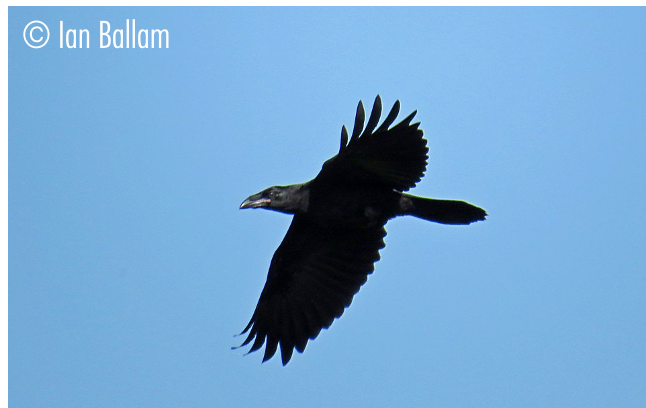
Alca torda
Passage Migrant & Winter Visitor
Like Guillemot, small numbers occur during the winter but tend to stay near the harbour mouth and don’t tend to venture into the inner harbour. A maximum count of 248 Razorbills flew past Old Harry on 24th January 2008, and on 26th there were 120 Razorbills sitting on the water with twelve Guillemot out in Poole Bay.
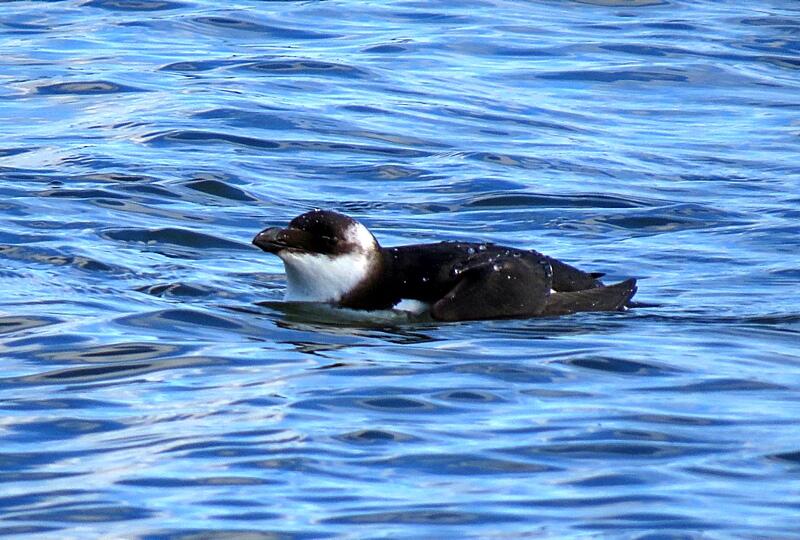
Milvus milvus
Regular spring passage migrant and possibly now resident
Red Kite has seen a dramatic change in status in Dorset and Poole Harbour over the last 5 years (as of 2020) with populations ever growing in the north of the country this species has become a much more regular sight in the harbour with at least 20-30 sightings each year. Red Kite were likely a common bird across Dorset and southern Britain several hundred years ago, but relentless persecution saw them become extinct across much of their range. Since their eradication Poole Harbour didn’t see it’s first record until September 1922 with 1 seen over Wareham. From then sightings were sporadic with the next not occurring until September 1966 and then August 1987. Then, in the early 1990’s, as reintroduction programs began in the UK sightings in the harbour began to increase.
1 at Arne on 3rd April 1990
1 wing-tagged over Lytchett Bay on 1st November 1992
1 past Corfe Castle and over Swineham on 23rd March 1995
1 over Lytchett Bay flying high over Rockley on 28th April 1996
1 at Lytchett Bay on 26th August 1997
1 over Corfe Castle on 23rd March 1999
1 at Arne on 16th October and on 23rd December 1999
By the early 2000’s, British and Scottish populations began to expand, as did the original Welsh population. This meant sightings in the harbour continued to increase, and by spring 2015 a new and fascinating spectacle was beginning to manifest each spring where 2nd cal year (non-breeding) Red Kite undertook a SW spring migration thorough Dorset and down towards Cornwall with Poole Harbour seeing it’s fair share in the latter part of April/early May each spring. Then, on May 10th 2020 an exceptional migration took place through Dorset and the harbour. It started at Lytchett Bay when at around 9am the first one was logged heading SSW, quickly followed by another. Within an hour 15 had been logged and by early afternoon 23. At the same time 8 were logged over Oakdale, 11 over Poole Hospital, 13 over Canford Heath, 14 over Lytchett Matravers, counts of 3-5 over Sandford, Wareham, Studland, 26 over Langton Matravers and a whopping 63 past Westbourne. They were literally everywhere with the peak certainly seeming to be between 11am and 12pm, but it suddenly stopped at around 2pm. Its hard to estimate an exact count but it’s safe to assume that several hundred must have moved through the area that morning which was just fantastic and an experience many who saw ‘flocks’ of Red Kite that day will never forget.
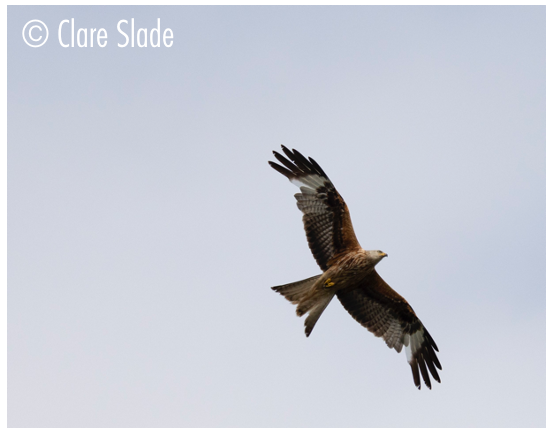
Lanius collurio
Vagrant
Until the 1950’s this species could be found on most heathlands of east Dorset… but a decline started in 1951 and was complete by 1962. Now a rare vagrant mainly in spring and Autumn.
1 on 19th May 1961 at Holton Heath
1 on 27th Sept 1962 at Arne
1 on 11th Sept 1963 at Arne
1 male calling on 21st June 1975 on Studland Heath
1 on 31st October 1984 at East Stoke
1 on 5th June 1988 at Lytchett Bay (GP Green)
1 female on 6th July 2012 at Holton Lee (P.Morton et al)
1 on 11th September 2015 at Greenland’s Farm (SW.Smith)
1 female on 24th May 2016 Hartland Moor (R&D.Dyer et al)
1 at Arne 5th July 2017
1 on 24th August on Hartland Moor 2017
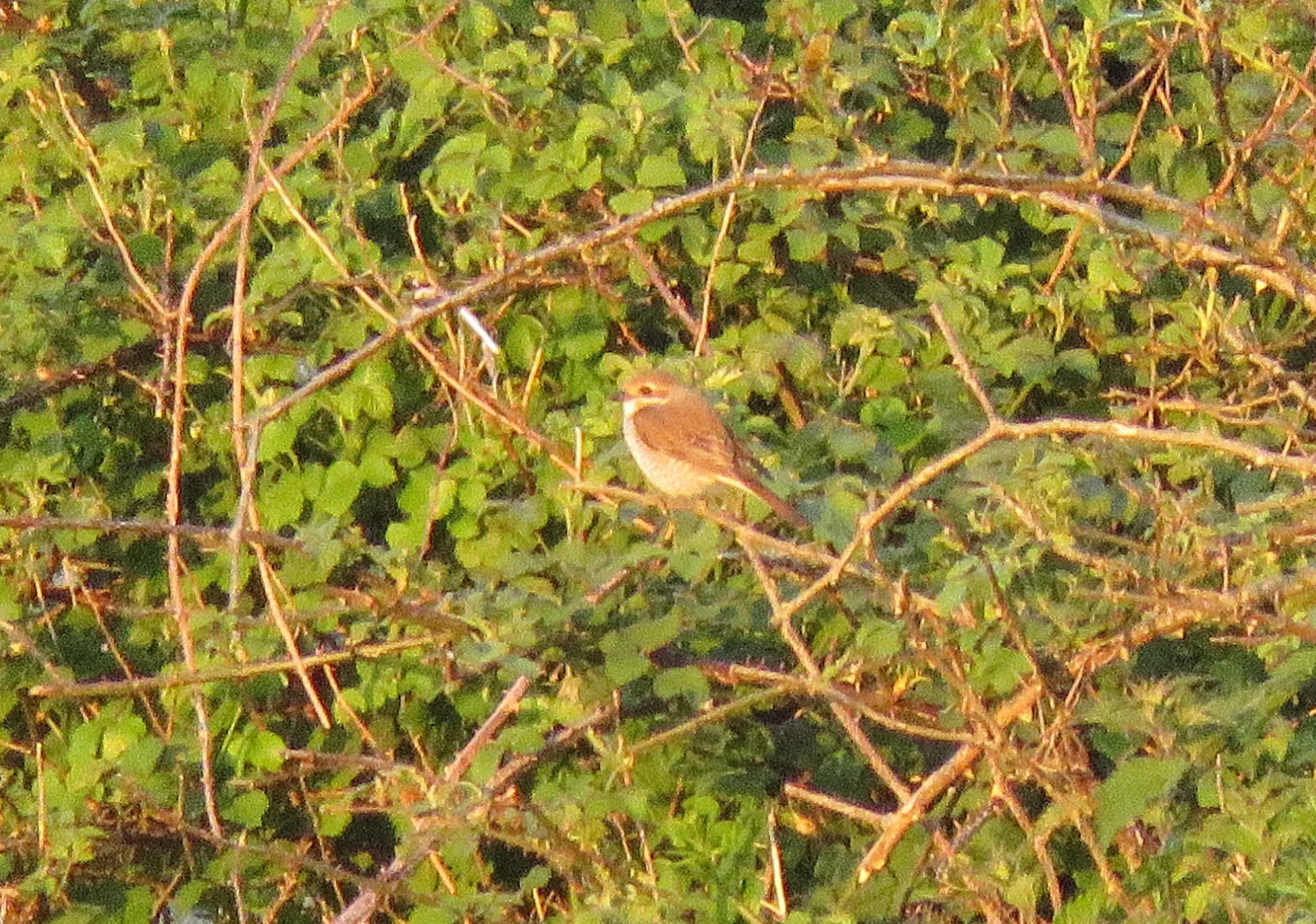
Branta ruficollis
Vagrant
Either an extremely rare vagrant, or feral wanderer for escaped populations. There is still debate as to whether any/many Dorset or UK records relate to true wild birds but with many records consisting of birds associating with wild Brent Geese flocks and acting/behaving in a truly wild way it seems 100% wild Red-breasted Goose are actually more regular than people may assume.
1 (1st W) on 12th November 2003 at Shell Bay (C. Cottrell)
1 (Adult) 18th November 2006 – 25th January 2007. It was found at Middlebere but then frequented various sites. (T.Hill et al)
1 (Adult) 24th March at Middlebere and 30th March 2014 at Fitzworth (K.E.Lane et al)
Mergus serrator
Winter Visitor
Dorset hosts the largest wintering population outside of Scotland with The Fleet and Weymouth now holding slightly more than Poole Harbour. Large rafts of these ‘punk rockers’ can be seen loafing out on any body of water in the harbour. A great way to see them is from a bird boat winter tour. A large evening roost can be seen in-between Furzey Island and Round Island mixing with Goldeneye and Great Crested Grebe. Brands Bay, Bramble Bush Bay and in the outer bays of the harbour will all see reasonable numbers during the winter.
The maximum count is of 535 in 16th December 1979, though this has reduced in recent years. The harbour WEBS mean peak 2011 – 2016 is 240, max 299 in 14/15. An interesting trait that RBM previously was their habit of flying in and out of the harbour at dawn and dusk, possibly an inherited survival technique from ancestors who were shot at when wildfowling was rife 100 years ago. Thankfully the harbour is a much safer place these days and many birds now roost near Furzey Island. Sadly from the perspective of a unique birding spectacle the ‘fly-out’ is now a shadow of what it was 25 years ago.
Poole harbour has the largest wintering population outside of Scotland with an average of 405 and is a nationally important wintering area. It is the third most important estuary in the British Isles for this species with 60% of the counties birds. The maximum count is of 535 in 16th December 1979. During the winter you can find birds on any open water and occasionally in Poole Park.
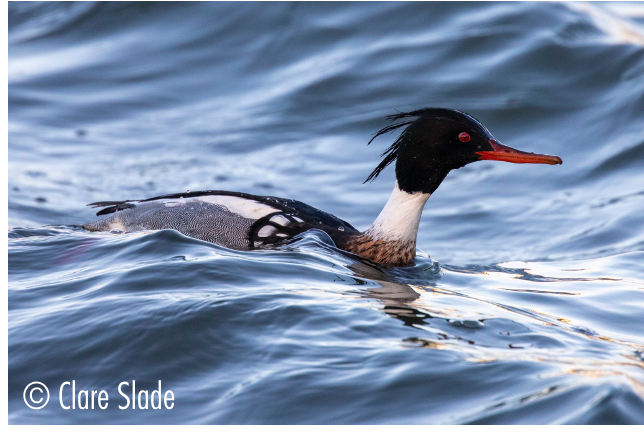
Netta rufina
Rare Visitor
The largest feral population in the country exists at Cotswold Water Park in Wiltshire and this may certainly account for many of the records in the last 25 years although sightings have dropped off considerately over the last decade. Little Sea and Swineham GP have seen the most recent records. First recorded in 1950 at Little Sea where a male was present from 24th-25th December and again 15th Jan 1951.
1 on 24th – 25th Dec 1950 at Little Sea where a male was present and again 15th Jan 1951.
1 on several dates in April also 30th – 31st May 1963 on Brownsea
A male on 14th Dec 1963 at Studland
1 27th to 31st Dec 1982 at Little Sea
1 on the 10th Nov 1984 in Holes Bay
1 from 9th Mar to 12th May 1989 at moved between Brownsea and Luscombe Valley.
A drake from 11th – 20th Nov in Poole Park, moved to Hatch Pond on 28th Dec 1989 was thought to be the same bird as above.
1 in late Dec 1993 at Little Sea
1 on 1st Jan 1997 at Little Sea
A drake on 23rd Mar 2006 at Little Sea
Up to 6 between 9th – 23rd Jan 2010 at Brands Bay/Little Sea during very harsh weather
A drake between 28th Nov 2010 and 23rd Apr 2011 at Little Sea (present on and off)
A drake on 10 dates between 24th Apr and 19th Jul 2011 at Swineham GP (presumed to be the same as above)
A drake from 8th – 13th Nov 2012 at Swineham GP
1 on 25th Sep 2013 at Creekmoor Ponds
Falco vespertinus
Vagrant
A vagrant to the harbour from SE Europe. Mainly in late spring. There were 37 Dorset records up to end 2015 but it has now increased considerably with records each year in Dorset from 2013 to 2018. Poole Harbour has 7 records including an amazing account of a pair that stayed for over a week in 1989.
A pair 4th – 12th June 1989 on Hartland Moor (T.Russell et al). A male and female were watched together with up to 12 Hobby, feeding on large numbers of newly hatched insects. The Hobby numbers declined after the first few days, and the female was last seen on the 12th. The warden at the time decided that the news should not be released and that the record shouldn’t even be submitted to the British Birds Rarities Committee. A photograph of the female sitting on a post was taken. With the passing of the other observers we are grateful that Tasie has now been able to reveal the full story of this amazing event.
8 records ranging from 13th May to 6th August.
1 shot on 19th May 1904 near Wareham
1 on 27th Jul 1963 ‘was observed at close range near Wareham’ (H.G.& W.B.Alexander)
A male on 6th Aug 1978 at Arne (D.Bishop, M.Rowbottom, C.Unsworth)
A male on 13th, 16th and 24th May 1987 at Studland (S.J.Morrison, G.Dutson et al)
A female on 3rd – 4th Jun 1995 on Ballard Down (E.S Brodie, T.Elborn et al)
A female on 20th – 26th May 2015 Wareham Water Meadows – a popular and widely twitched bird.
1 at Morden Bog, 2cy female present around the Old Decoy Pond area from 4th to 8th May 2016 (BJ Hill et al).
1 Morden Bog on 18th Jun 2017 (ID Ballam, A Brown et al)
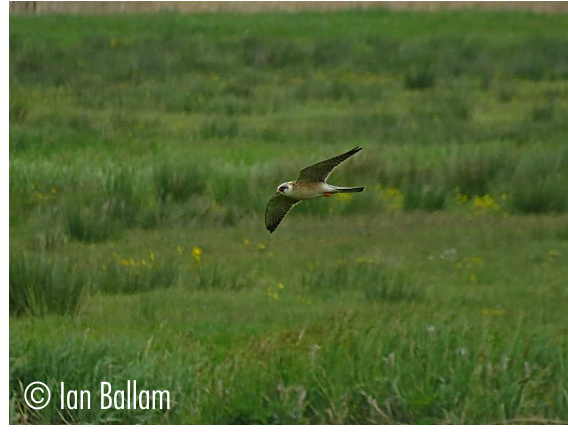
Alectoris rufa
Scarce Resident
Not an easy bird to see in the harbour now, with occasional birds up on Ballard Down and recent sightings at Arne, Soldiers Road, Norden and Ridge. Populations just outside the recording area will no doubt find their way to the various farms and scrubland in the west of the harbour. Still releasesd en mass each autumn across the UK but for some reason not locally within the harbour or surrounding area. Recent releases have been at Norden and Rempstone. They Bred in 1963, then bred behind Kerry Foods in 1995. They used to be recorded annually on all the heaths and farmland fringes in the harbour.
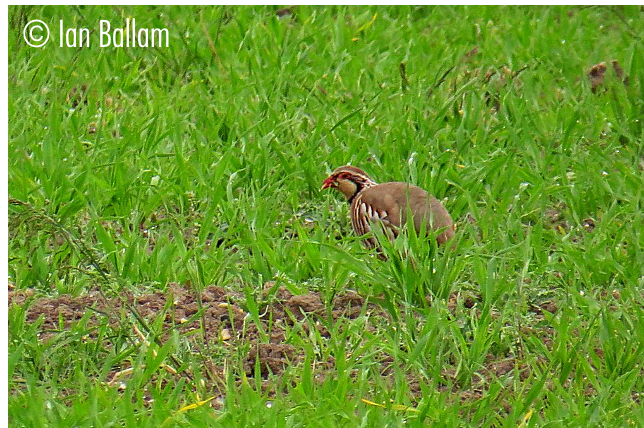
Podiceps grisegena
Scarce Winter Visitor
The rarest of the winter grebes, but at least one is seen each winter either out in Shell Bay or Studland Bay, or just off Pilots Point, inside the harbour mouth or off the southern shores of Brownsea. Amazingly there was a maximum of 18 in Poole Bay during December 1988 and again 18 off Branksome Chine on the unusually late date of 15th April 1996. The earliest arrival was on the 22nd October 1999 at Arne with returning summer plumage birds passing through in April, the latest birds lingering until the 17 April 1987 in Shell Bay. Recently Shell Bay and the Studland Beaches seem the best places to look but records of more than one per winter are now sadly very scarce.
Recent Records
2014
Sandbanks – 1 on Dec 18th
2015
Studland Bay – 1 to 2 present from 1st – 29th January and 1 from November 19th – 26th December
2016
Poole Harbour Singles on 1st, 3rd & 24th Jan at various sites but probably relate to the same individual.
2018
Poole Harbour First winter period record of singles on several days from 6th Jan to 25th Feb at various sites. During the second winter period, 2 birds were present on 10th Dec with singles also recorded on several dates between 4th & 28th Dec.
2019
Bournemouth 1 off beach on 6th Feb.
Branksome Chine 1 on 20th Jan.
Poole Harbour 1 between Brownsea and Long Islands and a second (possibly same) bird nearer the harbour entrance on 15th Nov.
Shell Bay/Studland 2 on 14th Jan, 1 on 20th Jan.
Swineham GPs 1 present from 23rd Mar-7th Apr, and from 22nd-26th Apr.
2020
Branksome Chine 4 offshore on 18th Dec.
Poole Harbour 1 off Brownsea Island and Arne RSPB on 19th & 20th Feb and 1 in Brand’s Bay on 25th Oct.
Shell and Studland Bays 1 between 15th and 21st Dec.
2021
Harbour mouth, 1 on 14th Nov and in Brands Bay 14th and 15th Nov.
Jerry’s Point, 1 from 11th – 15th Dec
Shell Bay, 1 from 15th – 26th Nov and 9th – 16th Dec
2022
1 in harbour entrance on Jan 3rd
1 off Jerry’s Point on Jan 7th
1 in Shell Bay Jan 9th
1 off Ham Common 29th Oct and the same individual off Shipstal Point, RSPB Arne 27th Dec
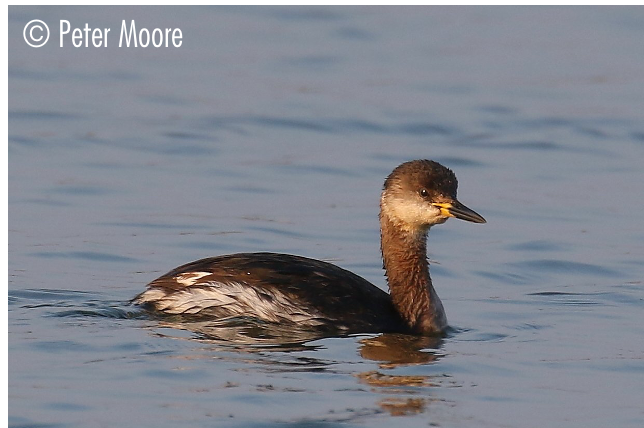
Phalaropus lobatus
Vagrant
A vagrant to the harbour. Typically there around 30 non-breeding records of this attractive wader in the UK each year but it is rare in Dorset.There are only 5 Poole Harbour records including an amazing occurrence on Arne Moors during Sept 2017 when one shared a small pool with a Grey Phalarope for several days.
1 adult in summer plumage off Shipstal Point was watched for over an hour in May 1962 (A. Bromby).
A juv from 17th-19th Aug 1989 on Brownsea.
A juv on 26th Aug 2011 on Brownsea (ES Brodie et al)
A juv on 25th Aug 2017, 300m off Shipstal Beach, Arne seen at close quarters by a public Osprey bird boat (S. Emmerson et al)
A juv from 21st-26th Sept 2017 on small pool in NW corner of Arne Moors (J. MItchell et al) sharing a pool with a Grey Phalarope – one of the all-time harbour “best birding experiences”.
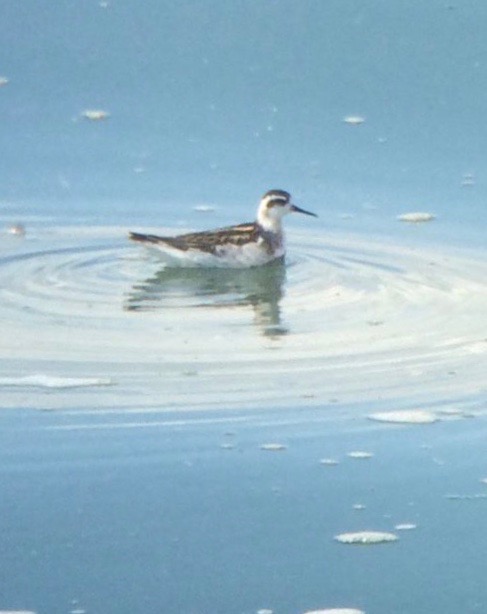
Cecropis daurica
Vagrant
With only 4 records, a lingering bird would attract a good crowd. How long will we have to wait?
1 on 19th April 1987 at Arne (W Fletcher, S Roantree)
1 on 4th April 2011 sat on telephone wires at Bestwall, Wareham (P.Morton et al) photo, later over Swineham GP
1 on 3rd May 2002 at Bushey
1 on 14th Sep 2013 at Middlebere
Gavia stellata
Passage Migrant & Winter Visitor
In winter most regularly seen in Poole Bay and Studland Bay where numbers are generally between 1-4 birds. Higher counts can occur during periods of bad weather as they move around to find more sheltered areas. In the winter, best places to look are out in Poole Bay, Shell Bay and Studland Bay with occasional inner harbour records at places like Brands Bay and even Holes Bay and Lytchett Bay. Passage birds move through Poole Bay in an easterly direction in the spring and westerly in Autumn and on days of strong passage up to 20 birds can be logged. George Green in Birds of Dorset does mention mid winter movements and highly mobile winter birds.
The record maximum is 34 in Poole Bay on Christmas Day 1988, with the previous record being twelve counted flying in to the harbour, again on Christmas day 1984.
Unseasonal records include – 1 in Poole Harbour on 26th June 1961, 1 on 6th July 1978 Shell bay and 1 on 7th July 1988.
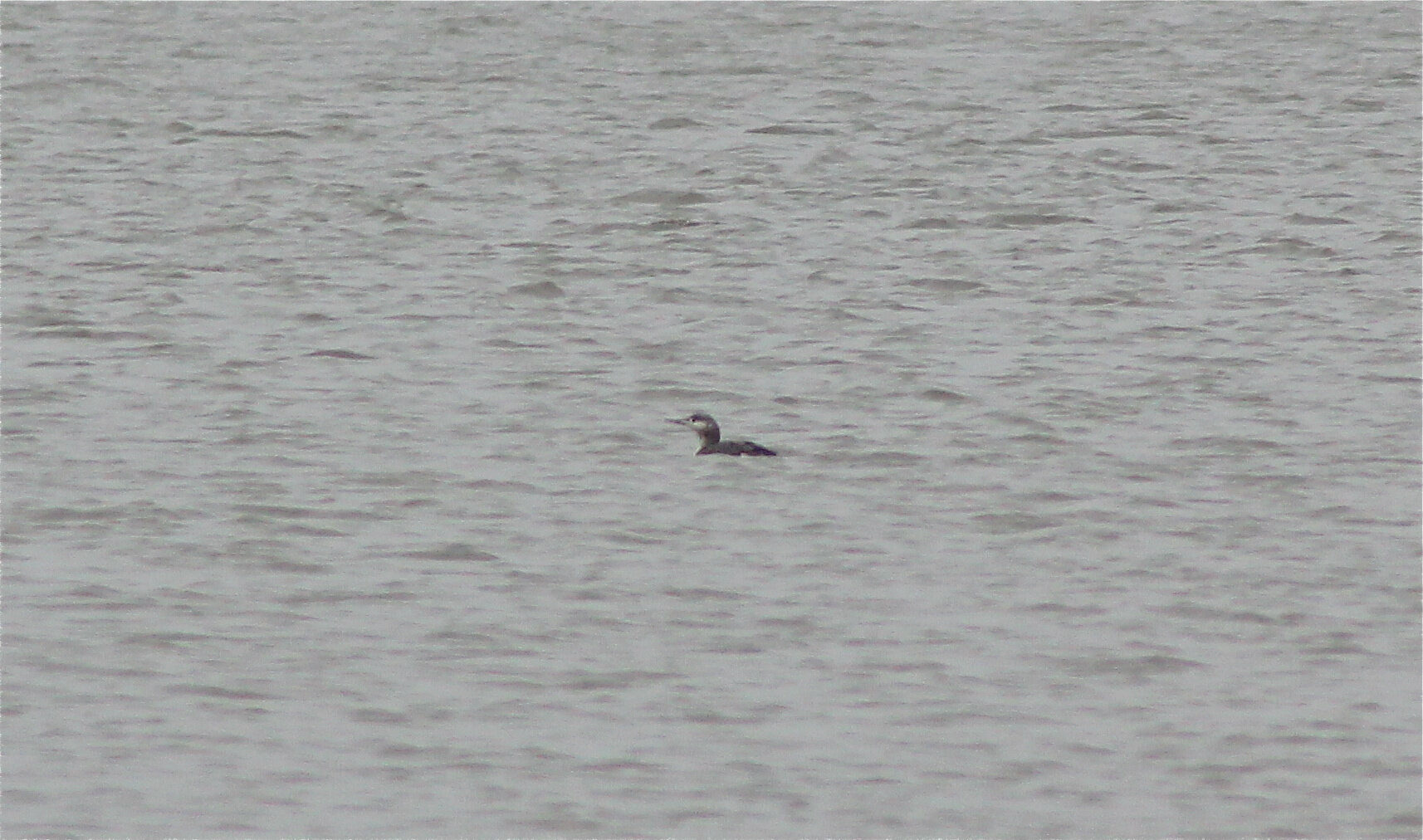
Tringa totanus
Resident
Often called the ‘Warden of the Marsh’ due to their habit of patrolling every creek, channel and mudlflat in the harbour. Winter counts rise to almost 1000 with pretty much the whole harbour seeing decent sized flocks. The wintering birds in the harbour are British, Icelandic and Scandinavian breeding birds, however breeding in the harbour seems to have declined, meaning a small decline in winter numbers.
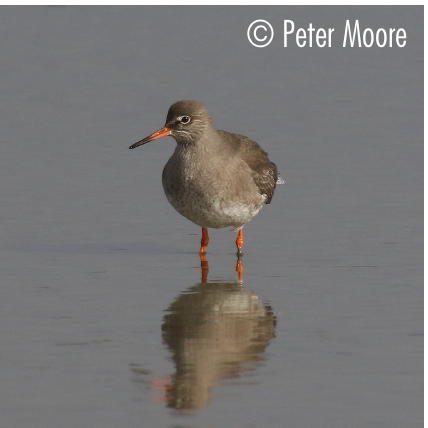
Phoenicurus phoenicurus
Summer Visitor & Passage Migrant
Seen more so in the autumn with the Middlebere approach track, Sunnyside Farm, Slepe heath, Soldiers Road, Hartland and Arne peninsular reporting good numbers, but can turn up anywhere from early August to late September. Spring passage less obvious but Ballard and Greenland’s Farm being worthy site. Recent breeding attempts have been at recorded at Slepe Copse and Arne.
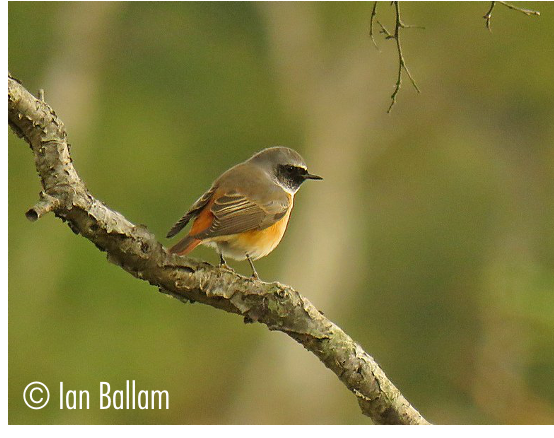
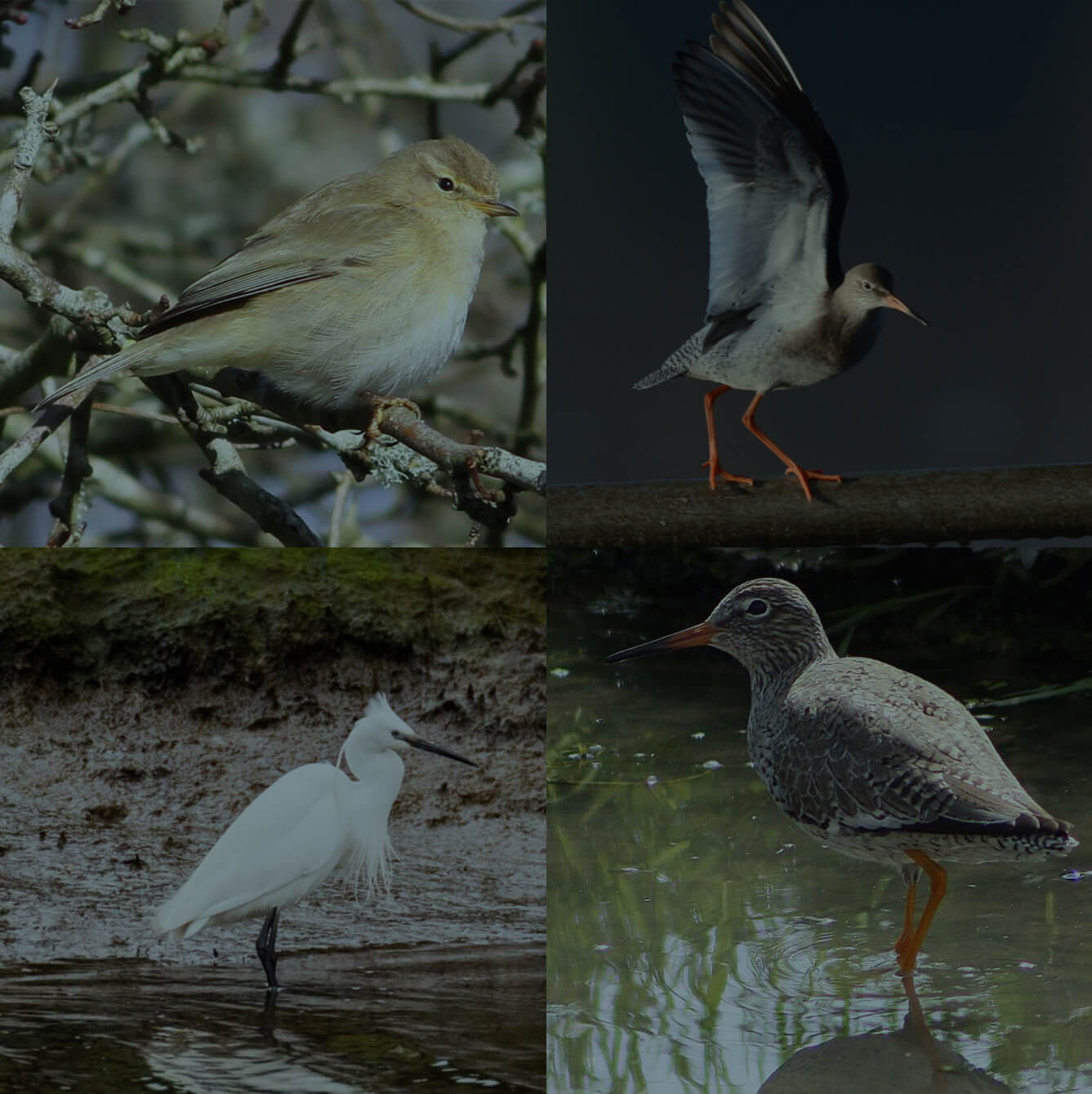
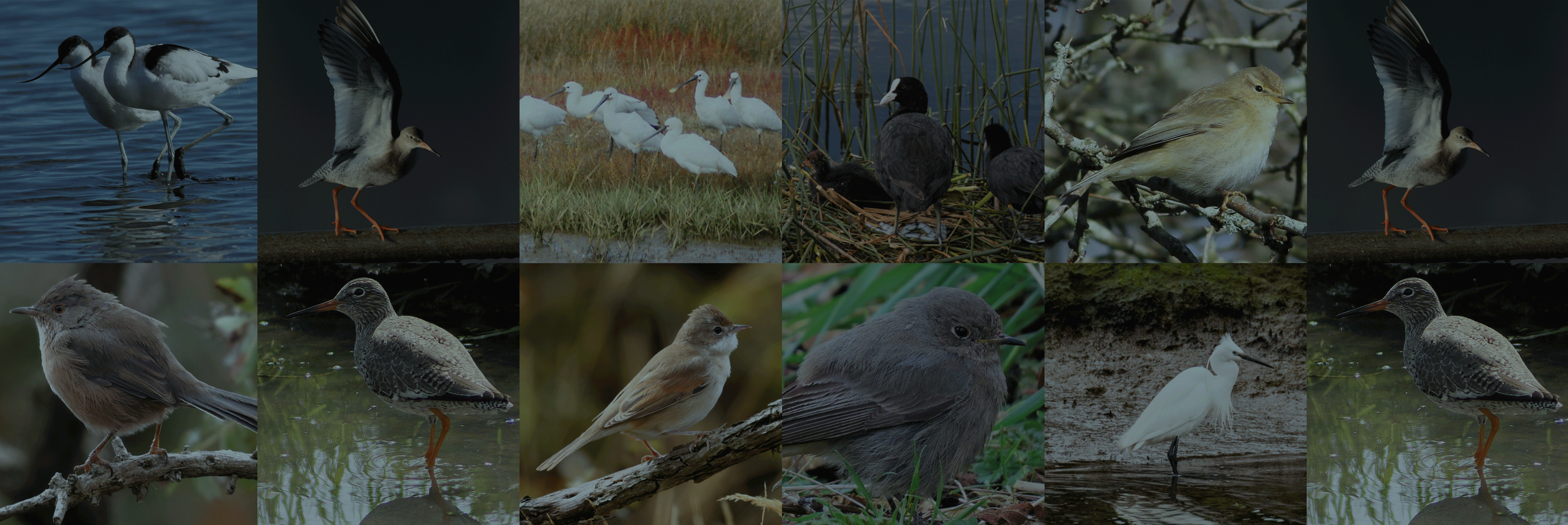
Media
Explore our videos, live wildlife webcams and sound recordings from Poole Harbour
© 2025 Birds of Poole Harbour Registered Charity No. 1152615
